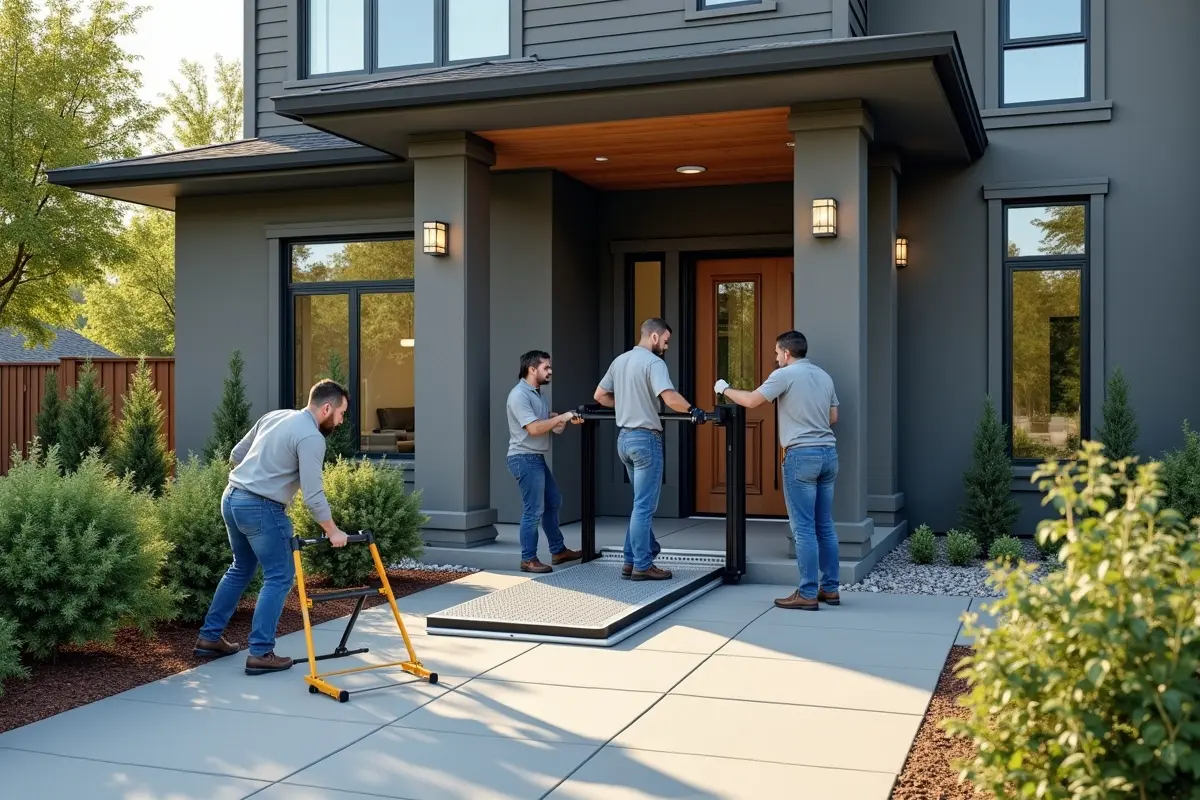When it comes to enhancing accessibility in buildings, platform lifts are a game changer. They make spaces more inclusive, allowing everyone—regardless of mobility challenges—to navigate floors with ease. But the real magic behind these lifts isn’t just in their sleek designs or smooth rides. It’s the specialists working behind the scenes, ensuring every installation and maintenance service is seamless.
Contents
Understanding Platform Lifts
If you’re unfamiliar, platform lifts are compact elevators that transport people (and sometimes wheelchairs or other mobility devices) between floors. Unlike traditional lifts, these are designed specifically with accessibility in mind, often for homes, offices, and public buildings. They are essential for making spaces accessible without needing to install large lift systems.
But the installation and maintenance of these lifts require a high level of expertise. This is where platform lift specialists come into play. Their role is crucial to ensuring that every lift is not only functional but also safe, reliable, and durable.
The Role of Platform Lift Specialists
Platform lift specialists are much more than technicians who simply plug things in and walk away. Their expertise covers a wide range of tasks, from planning and installation to ongoing maintenance and troubleshooting. Let’s explore how they ensure everything runs smoothly.
Step 1: Expert Consultation and Planning
The journey to a fully functioning platform lift begins long before any tools come out. Platform lift specialists work closely with architects, property owners, and engineers to plan out the ideal lift solution for a building. They assess the layout, available space, and the specific needs of the users.
Every building is different, and so is every lift installation. Specialists will:
- Analyse the space – Consider structural limitations, floor-to-ceiling heights, and available space to determine the best lift design and placement.
- Understand user needs – Who will be using the lift? Will it need to accommodate wheelchairs? How many people will use it daily? All these factors influence the choice of lift.
- Coordinate with other contractors – Lift installation doesn’t happen in isolation. Specialists often work alongside other contractors to ensure the building’s electrical, structural, and aesthetic requirements are met.
This planning phase is crucial. It’s where potential issues are identified and resolved before they become major obstacles. The result? A seamless installation process that minimises disruptions.
Step 2: Precision Installation
When the lift installation finally begins, it’s all about precision. Platform lift specialists have the training and experience to ensure every component is correctly fitted and calibrated. Attention to detail at this stage is essential to avoid future headaches.
One key aspect is safety. Specialists are responsible for ensuring the lift meets all necessary safety standards, from the integrity of the structure to the electrical systems. They test and retest everything to ensure that users can trust the lift completely.
Moreover, they make sure the installation process is efficient and causes minimal disruption to the building’s occupants. No one likes prolonged construction, so specialists work to get the job done swiftly and efficiently.
Step 3: Ongoing Maintenance and Support
Once the lift is installed, the job isn’t over. Regular maintenance is crucial to keeping platform lifts operating smoothly and safely. This is another area where platform lift specialists shine. They provide ongoing support to ensure the lift continues to function correctly, year after year.
Regular inspections – Specialists carry out routine checks to catch any issues before they become significant problems. This involves inspecting mechanical parts, checking the software, and ensuring everything meets the required safety standards.
Repairs and upgrades – Over time, parts may wear out or new technology may become available. Specialists handle any necessary repairs or upgrades, keeping the lift up-to-date and compliant with current regulations.
Emergency support – If something does go wrong, platform lift specialists are on hand to provide emergency repairs, ensuring that any downtime is kept to a minimum. Their quick response can be the difference between a minor inconvenience and a major disruption.
Why Expertise Matters
It’s clear that platform lift specialists play a vital role in ensuring lifts are installed and maintained to the highest standards. But why is their expertise so essential?
- Safety – Poorly installed or maintained lifts can be dangerous. Specialists have the training to prevent accidents and ensure lifts operate safely.
- Reliability – A lift that’s frequently out of order is frustrating for users and property owners alike. Regular maintenance by specialists keeps downtime to a minimum.
- Compliance – Regulations surrounding lift installations are strict, especially when it comes to accessibility. Specialists ensure everything is up to code, avoiding legal issues for building owners.
- Longevity – Proper installation and maintenance extend the lifespan of the lift, providing better value for the investment.
Making Accessibility Effortless
Platform lift specialists do more than just install and fix lifts—they’re enablers of accessibility.
Whether you’re considering installing a platform lift in a home, office, or public building, know that the specialists behind the scenes are what make it all possible. With their expertise, you can be confident that your lift will provide years of seamless service, enhancing accessibility for all.

